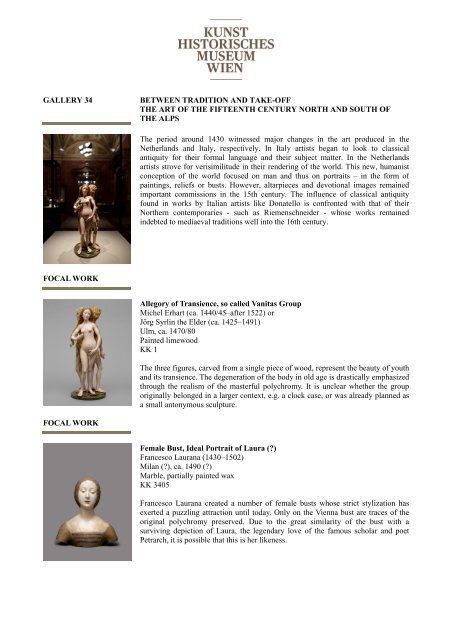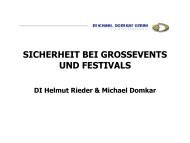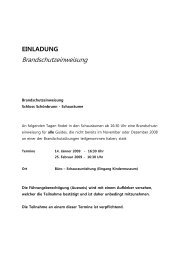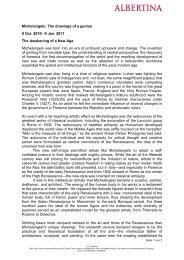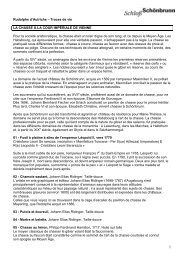kunstkammer vienna the cradle of the museum - Freizeitbetriebe ...
kunstkammer vienna the cradle of the museum - Freizeitbetriebe ...
kunstkammer vienna the cradle of the museum - Freizeitbetriebe ...
Create successful ePaper yourself
Turn your PDF publications into a flip-book with our unique Google optimized e-Paper software.
GALLERY 34 BETWEEN TRADITION AND TAKE-OFF<br />
THE ART OF THE FIFTEENTH CENTURY NORTH AND SOUTH OF<br />
THE ALPS<br />
FOCAL WORK<br />
FOCAL WORK<br />
The period around 1430 witnessed major changes in <strong>the</strong> art produced in <strong>the</strong><br />
Ne<strong>the</strong>rlands and Italy, respectively. In Italy artists began to look to classical<br />
antiquity for <strong>the</strong>ir formal language and <strong>the</strong>ir subject matter. In <strong>the</strong> Ne<strong>the</strong>rlands<br />
artists strove for verisimilitude in <strong>the</strong>ir rendering <strong>of</strong> <strong>the</strong> world. This new, humanist<br />
conception <strong>of</strong> <strong>the</strong> world focused on man and thus on portraits – in <strong>the</strong> form <strong>of</strong><br />
paintings, reliefs or busts. However, altarpieces and devotional images remained<br />
important commissions in <strong>the</strong> 15th century. The influence <strong>of</strong> classical antiquity<br />
found in works by Italian artists like Donatello is confronted with that <strong>of</strong> <strong>the</strong>ir<br />
Nor<strong>the</strong>rn contemporaries - such as Riemenschneider - whose works remained<br />
indebted to mediaeval traditions well into <strong>the</strong> 16th century.<br />
Allegory <strong>of</strong> Transience, so called Vanitas Group<br />
Michel Erhart (ca. 1440/45–after 1522) or<br />
Jörg Syrlin <strong>the</strong> Elder (ca. 1425–1491)<br />
Ulm, ca. 1470/80<br />
Painted limewood<br />
KK 1<br />
The three figures, carved from a single piece <strong>of</strong> wood, represent <strong>the</strong> beauty <strong>of</strong> youth<br />
and its transience. The degeneration <strong>of</strong> <strong>the</strong> body in old age is drastically emphasized<br />
through <strong>the</strong> realism <strong>of</strong> <strong>the</strong> masterful polychromy. It is unclear whe<strong>the</strong>r <strong>the</strong> group<br />
originally belonged in a larger context, e.g. a clock case, or was already planned as<br />
a small antonymous sculpture.<br />
Female Bust, Ideal Portrait <strong>of</strong> Laura (?)<br />
Francesco Laurana (1430–1502)<br />
Milan (?), ca. 1490 (?)<br />
Marble, partially painted wax<br />
KK 3405<br />
Francesco Laurana created a number <strong>of</strong> female busts whose strict stylization has<br />
exerted a puzzling attraction until today. Only on <strong>the</strong> Vienna bust are traces <strong>of</strong> <strong>the</strong><br />
original polychromy preserved. Due to <strong>the</strong> great similarity <strong>of</strong> <strong>the</strong> bust with a<br />
surviving depiction <strong>of</strong> Laura, <strong>the</strong> legendary love <strong>of</strong> <strong>the</strong> famous scholar and poet<br />
Petrarch, it is possible that this is her likeness.


